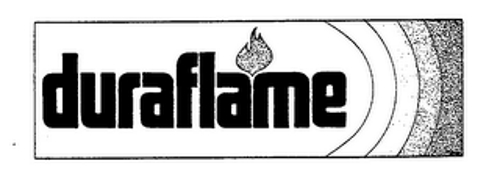 You search the trademark database at the USPTO and find that your competitor’s trademark registration was canceled because the competitor did not file renewal documents and fees. You jump at the chance to grab their trademark by filing your own trademark application on their mark. Did you succeed in grabbing up rights in their trademark? Not necessarily.
You search the trademark database at the USPTO and find that your competitor’s trademark registration was canceled because the competitor did not file renewal documents and fees. You jump at the chance to grab their trademark by filing your own trademark application on their mark. Did you succeed in grabbing up rights in their trademark? Not necessarily.
Common law trademark rights can be obtained by use of the trademark in business/commerce alone without a federal registration. Therefore lapse of a trademark registration does not automatically result in a loss of all trademark rights.
This principle is demonstrated in the case of Crash Dummy Movie, LLC v. Mattel, Inc., 601 F.3d 1387 (Fed. Cir. 2010).
Crash Dummies Fight
Mattel owned a trademark registration on CRASH DUMMIES for toys. Mattel acquired rights in the CRASH DUMMIES trademark when it acquired Tyco in 1997. In December of 2000, the USPTO cancelled Mattel’s registration on CRASH DUMMIES because Mattel did not file the required trademark renewal documents and fees.
On March 31, 2003, The Crash Dummy Movie, LLC (“CDM”) filed an intent-to-use trademark application on CRASH DUMMIES for games and playthings.
Mattel filed an opposition against the CDM’s trademark application based on Mattel’s common law rights in the mark CRASH DUMMIES. CDM claimed that Mattel abandoned its trademark rights in the mark.
Registration Lapse is not Abandonment
The Court stated, “Although Mattel later allowed its trademark registrations to lapse, cancellation of a trademark registration does not necessarily translate into abandonment of common law trademark rights.”
As explained in prior abandonment posts here and here, a trademark is abandoned if (1) its use in commerce has been discontinued (2) with no intent to resume use. The Lanham Act provides “[n]onuse for 3 consecutive years shall be prima facie evidence of abandonment….” 15 U.S.C. § 1127. This means that after three years of nonuse there is a presumption that the mark has been abandoned. But, the trademark owner can rebut that presumption by presenting evidence that during the three years the owner formulated an intent to resume use of the trademark in commerce.
Presumption of Abandonment and Rebuttal Evidence
Abandonment depends on trademark use and owner intent and not on registration alone. In the Crash Dummy Movie case, the presumption of abandonment attached because Mattel did not use the CRASH DUMMIES mark for more than three years beginning in December 1995 and ending in December 2003 (8 years) when Mattel made a shipment of CRASH DUMMIES toys.
But Mattel was able to rebut the presumption of abandonment and maintain its ownership of the mark by presenting evidence that Mattel intended to resume use of the mark during the first three years of non-use. That evidence included: (1) Mattel’s discussion with KB Toys in 1998 about them being the exclusive retailer of CRASH DUMMIES toys, (2) Mattel recorded trademark assignment in 1998 transferring ownership of the CRASH DUMMIES mark from Tyco to Mattel, and (3) research and development activities by Mattel from 2000 to 2003 regarding CRASH DUMMIES toys.
Looking at the Trademark Database is Not Enough
The Crash Dummy Movie case demonstrates that the failure to renew a trademark registration does not automatically result in abandonment of all the owner’s trademark rights. The trademark owner may still have common law trademark rights based on their ongoing use or intent to resume use of the mark.
Therefore, simply looking at the status of a registration in the USPTO trademark database will not tell you conclusively whether a trademark owner has abandoned all rights in the trademark. You will need to perform due diligence to gain reasonable assurance that the trademark owner has (1) stopped using the mark in business/commerce and (2) does not intend to resume use.
Determining the trademark owner’s intent is often not easy. So grabbing up an apparently dead trademark of another will likely carry some risk that the trademark owner has not abandoned all of its trademark rights.
8 Years of Non-Use Not Too Long
The risk that the owner has not abandoned all rights may reduce as the period of non-use grows over time. However, Mattel did not use its CRASH DUMMIES mark for 8 years from 1995 to 2003 and still retained its trademark rights based on its activities showing intent to resume use as explained above.
Risks If Trademark Rights Not Abandoned
If the original trademark owner has not abandoned all of its trademark rights, the owner might be able to sue you for trademark infringement based on your use of the mark and/or may oppose your registration of the mark as Mattel successfully did in the Crash Dummy Movie case.
 Kingsford-Clorox owned the trademark Duraflame for artificial firelogs. Kingsford-Clorox decided to get out of the firelog business and wanted to write off the goodwill associated with the Duraflame mark for accounting purposes. So it published a notice in the Wall Street Journal announcing the abandonment of the Duraflame trademark effective on the date of publication.
Kingsford-Clorox owned the trademark Duraflame for artificial firelogs. Kingsford-Clorox decided to get out of the firelog business and wanted to write off the goodwill associated with the Duraflame mark for accounting purposes. So it published a notice in the Wall Street Journal announcing the abandonment of the Duraflame trademark effective on the date of publication. In 1998, Erich Specht formed Android Data Corporation (ADC) and began selling e-commerce software under the trademark
In 1998, Erich Specht formed Android Data Corporation (ADC) and began selling e-commerce software under the trademark